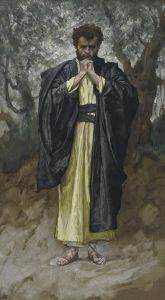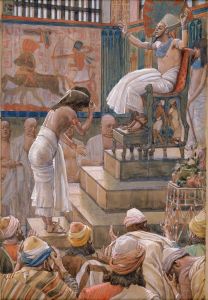
David Takes the Head of Goliath to Jerusalem
A hand-painted replica of James Tissot’s masterpiece David Takes the Head of Goliath to Jerusalem, meticulously crafted by professional artists to capture the true essence of the original. Each piece is created with museum-quality canvas and rare mineral pigments, carefully painted by experienced artists with delicate brushstrokes and rich, layered colors to perfectly recreate the texture of the original artwork. Unlike machine-printed reproductions, this hand-painted version brings the painting to life, infused with the artist’s emotions and skill in every stroke. Whether for personal collection or home decoration, it instantly elevates the artistic atmosphere of any space.
"David Takes the Head of Goliath to Jerusalem" is a watercolor painting by the French artist James Tissot, created in the late 19th century. The artwork is part of Tissot's extensive series of biblical illustrations, collectively known as "The Life of Christ" and "The Old Testament." This particular painting depicts a scene from the biblical story of David and Goliath, as described in the First Book of Samuel in the Hebrew Bible or Old Testament.
The painting illustrates the moment after David, a young shepherd, defeats the Philistine giant Goliath in single combat. According to the biblical narrative, David uses a sling and a stone to strike Goliath on the forehead, causing him to fall. David then takes Goliath's sword and beheads him. The artwork captures the subsequent event, where David carries Goliath's severed head to Jerusalem, a symbolic act demonstrating his victory and God's favor.
Tissot's watercolor style is characterized by meticulous attention to detail and historical accuracy, reflecting his deep interest in biblical archaeology and the cultural context of the ancient Near East. He traveled extensively in the Holy Land to study the landscapes, architecture, and clothing of the region, which informed his depictions of biblical scenes. In this painting, Tissot employs a muted color palette and precise rendering to convey the solemnity and significance of the moment.
The composition of the painting focuses on David as the central figure, emphasizing his youth and determination. He is depicted carrying the head of Goliath, with his posture and expression suggesting both triumph and humility. The background features a landscape that evokes the terrain of ancient Israel, adding to the historical and geographical authenticity of the scene.
"David Takes the Head of Goliath to Jerusalem" is part of the collection of the Jewish Museum in New York City, which houses many of Tissot's biblical works. These paintings have been praised for their narrative clarity and artistic skill, as well as their ability to bring biblical stories to life for contemporary audiences.
James Tissot (1836–1902) was a French painter and illustrator known for his religious works later in his career. After achieving success as a painter of fashionable society in Paris and London, Tissot experienced a spiritual awakening in the 1880s, which led him to dedicate the remainder of his life to illustrating the Bible. His biblical series remains a significant contribution to religious art and continues to be studied and appreciated for its artistic and historical value.















